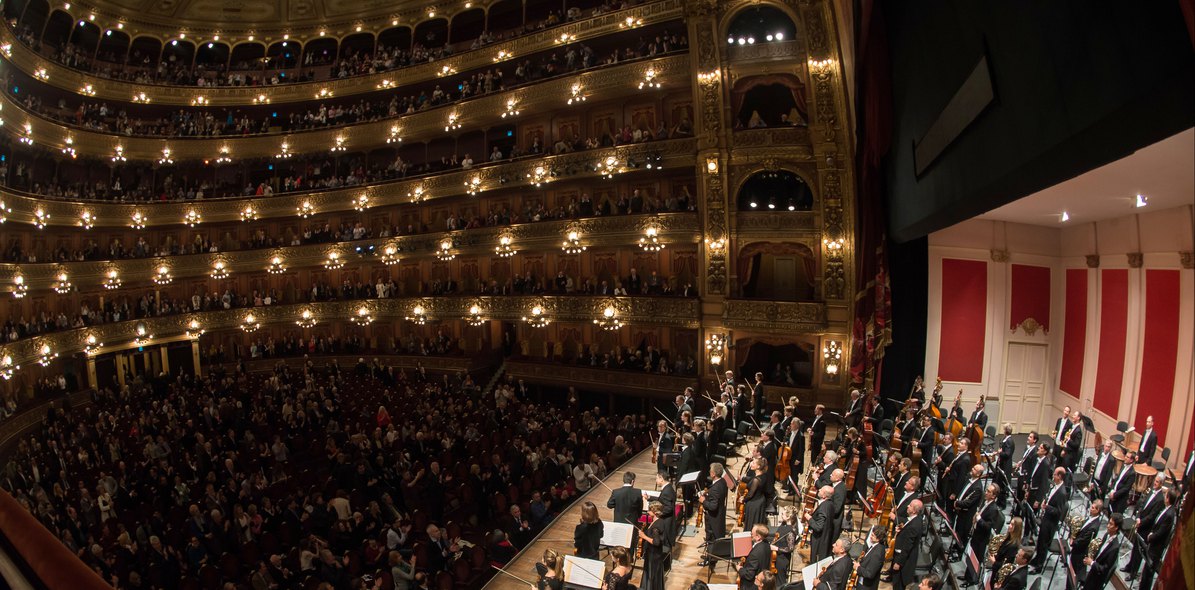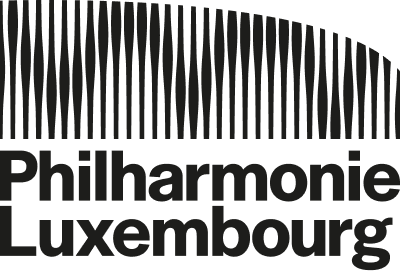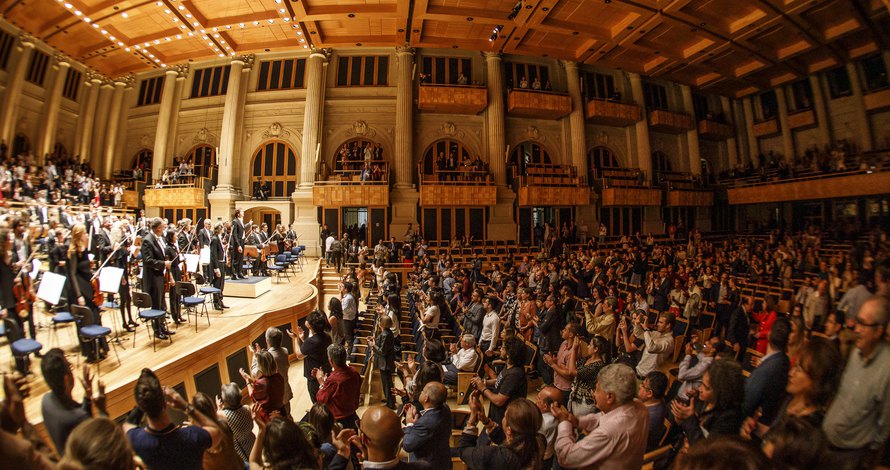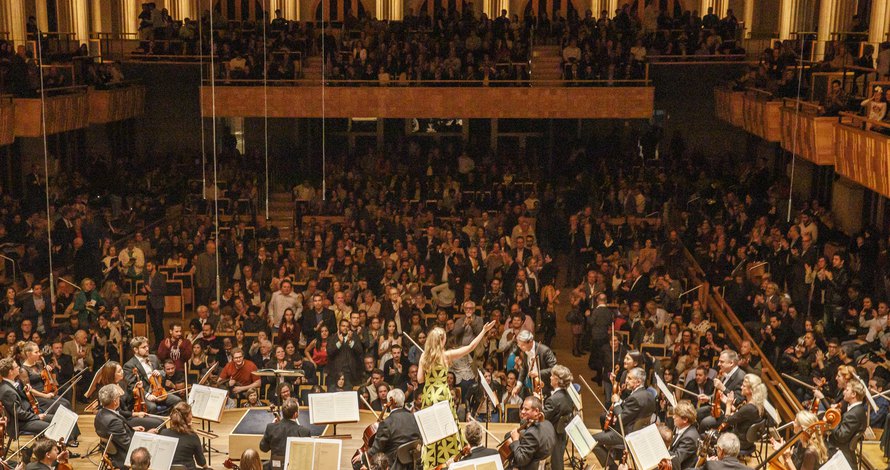
Music and environment
The concert ritual for symphonic music is fairly standardised throughout the world; orchestra enters stage, applause, conductor enters, applause, music, applause… But the concert experience is anything but standardised and something I greatly enjoy each time the orchestra performs on tour. There is the alchemistic blend of time, place, musicians, conductor, repertoire and public that makes every concert distinct and special.
Each place has its soundscape which is a mix of environment and culture. Indeed, acousticians and sociologists have made studies of which cities are for example the noisiest and which the most peaceful. There have even been surveys of the average sound level of talk and laughter on public buses – it isn’t surprising that Dublin buses are the noisiest on the British Isles.
Each concert hall also has its particular acoustic environment which along with its audience makes its atmosphere. On this tour we have so far experienced the warmth of a Brazilian public in their spectacular hall in Sao Paulo – a converted railway station which our Music Director, Gustavo Gimeno, described to me as having acoustics so good it is the Brazilian Musikverein.
The Teatro Colón in Buenos Aires is a huge 2500 seat Italianate theatre where the concert tradition dates back many decades. There the public has been treated to the best and expects the outstanding. Less familiar to touring orchestras are the beautiful but smaller (1500 seats) theatres in the cities of Rosario and Córdoba where the orchestra performed last week.
On every concert on this tour, I have had the sense that the public knows that the orchestra is a long way from home. The understanding that this orchestra has travelled many miles to be here to play our music for our audience has a direct bearing on the warmth of the welcoming applause; showing their own appreciation and expectation even before a note has been played. In each theatre it is slightly different; I’m sure that they clap their hands more quickly in Rosario than anywhere else I have been; in Córdoba they clearly decided to cheer from the beginning.
From the beginning to the end; if music as a collective experience can change us then we are an audience who arrives somehow different at the end of a concert to the audience we were when it began. And after this collective music induced metamorphosis there is still the encore to come.
We always perform an encore when the orchestra is on tour and here in Argentina offer something of the local musical culture and so we surprise with a version of Piazzola’s Libertango. To my reckoning it takes a collective of 1500 Argentinians about three bars of music to recognise what is happening and this is followed by a magical collective Argentinian gasp of approval. When it’s all over then the atmosphere is something else again.
Matthew Studdert-Kennedy is Head of the Artistic Planning Division at the Philharmonie Luxembourg and the Orchestre Philharmonique du Luxembourg.
Title photo: Liliana Morsia







